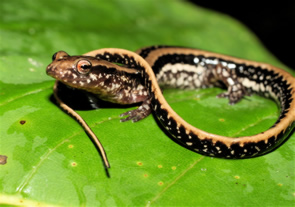
Eurycea guttolineata
Photo by J Petranka
Description: The ground color of this salamander varies from tan to yellow. Three dark stripes run down the back and sides, making this salamander very distinctive. The middle line runs down the center of the back and may end at the base of the tail. The other lines are on the sides of the body. In some individuals, the central stripe may be discontinuous and appear as a series of dark bars with small spaces between them.
Habitat/Range: Three-lined salamanders are fairly abundant at lower elevations in much of central and western North Carolina. Although terrestrial as adults, three-lined salamanders are rarely found far from wetlands, springs, streams, and wet ditches.
Diet: Three-lined salamanders feed on a wide variety of invertebrates.
Reproduction: Three-lined salamanders breed and lay eggs in slow-moving water such as sluggish streams, bogs, and seeps. Eggs hatch in early spring and hatchling salamanders emerge from their eggs with external gills. The hatchlings typically spend 4-6 months as fully-aquatic larvae before transforming into adults. Larvae in some montane populations will occasionally overwinter as larvae and transform into adults the following year.
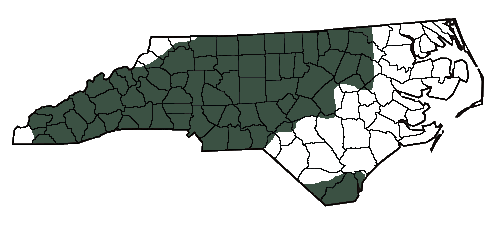
The shaded region represents the range of the three-lined salamander in North Carolina.
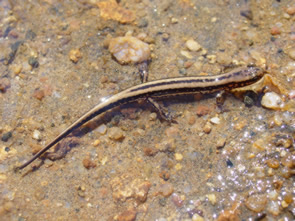

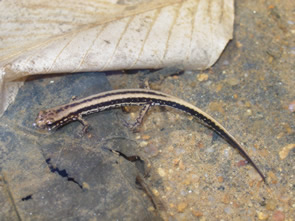
Photo by JD Willson
-gmc-5-21-2008-highlands.jpg)
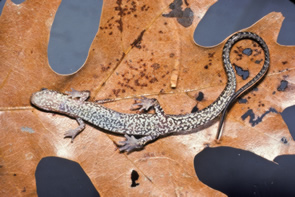
Photo by Grant Connette
The mottled ventral pattern of the three-lined salamander.
Photo by D Dennis
